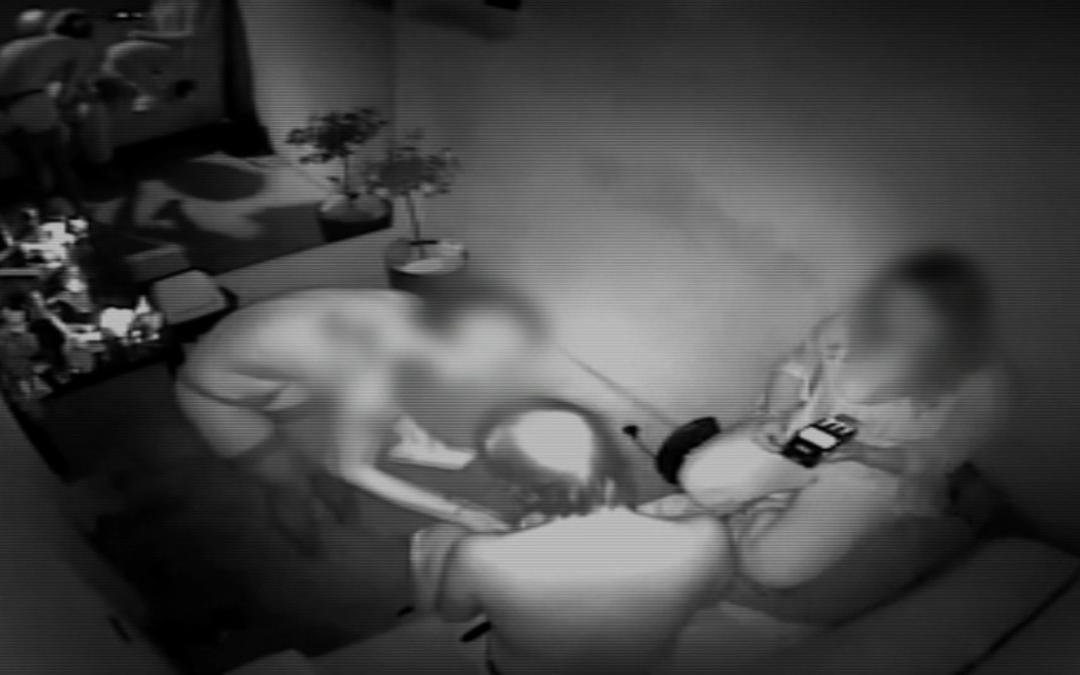By Robert Socha
Countless foreign visitors to Poland’s major cities have had their experience ruined by being scammed out of large sums of money. They might lose 5,000 US dollars, and sometimes several times that amount, after being lured into strip clubs by a friendly female local promising a free drink.
Many of them claim to have been drugged, but impotence from banks as well as indifference from the police means that few ever have a chance of seeing their money again. Some people are even known to have died in these clubs. How does this keep on happening, and who are the scammers who keep getting away with it?
It is a well-known scheme throughout Poland. A man walking down the street is approached by an attractive young woman who offers him a free drink. It sounds like great hospitality. He follows the girl, and soon realises that he has just stepped into a strip club.
But these clubs are not the harmless fun that many foreign visitors might assume. They are often murky places run by shadowy figures where patrons, mostly tourists from abroad, are getting scammed. Last September the US embassy in Warsaw even issued an official security alert, warning of “scams involving spiked drinks and credit card overcharges”.
Exploiting the shame
Few victims are willing to talk openly about what happened to them. One who did share his experience with me is John Deverall from New Zealand. In 2018 he lost almost 19,000 zloty (the equivalent of roughly 5,000 US dollars) in just two hours in a strip club in Kraków. He claims that he bought just one drink and then had at most three further shots.
“The next day I was completely wrecked,” said Deverall when I interviewed him. “After leaving the club, I threw up on the pavement. I felt very, very sick. I was not able to get up until after lunchtime. I’ve never felt like that in my life.” He was sure that he must have been drugged. Deverall is pictured in the image above, taken from the strip club’s CCTV footage.
Almost all of the victims I have met in person, or whose victims’ statements I have read, tell a similar story. They remember nothing, or very little. A couple of drinks, then a black hole. Their bank cards completely wiped out.
Strip club scams have been linked to in at least two deaths. In 2017, a 36-year-old British man died in a club in Kraków. An investigation was launched, but no conclusions have been delivered yet. The same year, a Turkish man died strip bar in Wrocław. He consumed five drinks in 20 minutes. When he refused to drink any more, CCTV footage shows that a dancer forcibly poured two more glasses into his mouth. The man collapsed to the floor, and eventually stopped breathing. In November this year, the club’s manager and the dancer went on trial.
Such scams received a lot of attention before 2014, when the notorious Cocomo chain of strip clubs disappeared from the market. This was mostly the outcome of growing media interest and one particular case in which a patron had lost more than 250,000 US dollars using a no-limit executive corporate card – although the investigation was closed without any charges.
I decided to return to the subject last year, taking advantage of Polish freedom of information laws. I asked prosecutors’ offices in the biggest cities in Poland whether they were still dealing with such cases. The answer stunned me. Hundreds of such victims’ claims had been lodged in every large Polish city, but none had ever reached court. Considering the nature of the problem, I was convinced that the real number of victims must have been much greater.
I have contacted a few dozen victims of scams in the course of my investigation. Some were not interested in talking to a journalist at all. Others agreed to speak, but only off the record, and just a few did so on the record. Most victims did not report their experience to the police and just got over it.
Deverall crowdsourced a sample of well over a hundred victims on the internet. Most said they did not go to the police, because to do so would have involved money, a lawyer, and their time, and they were just about to leave Poland. Plus there was the language barrier, and often a reluctance to draw attention to the fact they had visited a strip club.
The most expensive night
The amount of money clients of clubs have lost varies widely. Reading the claims, the highest numbers I saw personally were 40,000 and 25,000 US dollars. The figure was often around 5,000 dollars, a popular default credit card limit. A large sum for a night and couple of drinks, but not enough to pick a legal fight in Poland and hire a lawyer, especially if you only came here for a few days and do not know the language.
Do banks and credit card operators care? Not much. As long as the victims provided their chip & PIN, it is hard for them to claim that it was an unauthorised transaction. Just a few people have been lucky enough to be reimbursed. I spoke off the record with a Canadian man who lost 15,000 US dollars in a club in Warsaw (all he remembers is that he asked for a glass of water upon entering). Eventually, he was reimbursed, but this was an exception, only because he was a high-profile customer of the bank.
One Scottish man says he ordered a single beer and then blacked out in a Kraków club. When his spending for the night exceeded 1,000 euro, his card was blocked because his bank was unable to get in touch with him to authorise the unusual transactions. Deverall called his bank in New Zealand when he woke up in his hotel, and was informed that his transaction history showed he had spent the night in a strip club in Poland. Although the bank had heard of Polish strip club scams, they told him that he was unlikely to see his money again.
Strange things mostly happen not in the communal area of clubs, where strippers dance and fish for prospective clients, but in so-called “private rooms”. The catch being that they are not private at all, but under heavy surveillance, as are the rest of the premises. They are designed this way for security reasons. But it is not the clients’ security that is being attended to. The club owners are protecting themselves.
The trick is to make the client provide his PIN number voluntarily on the record every time a terminal is in use. Sometimes it is given every few minutes, with the patron often told that the transaction was declined when in fact it was approved. This continues until the card is maxed out.
Alternatively, the men end up unintentionally paying for unwanted services – such as extremely expensive champagne, plastic flowers, or an erotic dance. Chip & PIN technology and the fact that the club is recording transactions on CCTV means that the clients’ consent is hard to challenge.
No sex included
It is not just the flowers that are fake. Almost everything in the clubs is not quite as it seems. The girls use false names. There are two types of menus – for patrons and for the girls. The girls push the men to buy them expensive drinks costing 100 or 200 US dollars per glass (“don’t be a scrooge,” they say). Except that they contain no alcohol. The women are at work, after all, and are expected to entertain and be nice to clients all night long and to perform pole dances.
The girls are watched closely by the club’s manager. The more money they can squeeze out of a client, the more commission they earn. Their goal would always be to seduce a man to go to a private room, where a large quantity of “free” drinks is soon brought in, and where the arrival of a mobile terminal signals the start of the real milking. Sex is out of the question (and illegal). Clients can expect a lap dance, some touching, but nothing more. For disappointed or aggressive patrons, a bouncer is just around the corner, because everything is being watched all the time.
“Foreign customers quite often expected to get sex in such places,” says a former dancer who agreed to talk to me on condition of anonymity. “All the staff, including dancers, were forbidden from saying directly that there was no such service here. We had to dodge the question. We were trained to tell the man to follow us to a private room where we would have some cosy time together, just the two of us. But we couldn’t say that sex is excluded.”
The clubs definitely prefer credit cards. But for customers’ convenience (to avoid a wife’s curiosity, for example), ATMs are also available inside the clubs. The girls are happy to escort their client to the machine – and sometimes need to, as he might barely be able to walk. They also often assist with the withdrawal.
This was the case of one Polish client, who lost the equivalent of almost 8,000 US dollars in one night in this way. He is now fighting a legal battle with the club, with no final verdict yet delivered. The key evidence is a CCTV video showing the man, accompanied by women, making withdrawals. He claims that he remembers nothing.
How do the police react? There is a clear pattern of dismissing such complaints. Two issues are at play. Firstly, victims in almost all cases claim that they were drugged, because they essentially remember nothing. But when they go to the police a day or two afterwards, there is nothing in their blood, which means no evidence of the alleged drugging.
No one knows what kind of magical substance might be used, if any. Some people say it is just the right mix of alcohol. Others claim it is the date-rape pill (GHB), which is difficult to detect due to its rapid dissipation. Hydrogen peroxide, which can accelerate and heighten the effects of alcohol, has also been mooted. But this is all unsubstantiated speculation. In one case in Gdańsk, a victim found traces of psychotropic drugs in his blood, but the prosecution concluded that there was no certainty that the drug was ingested while the man was in the club, or that the club had provided it. Police raided the venue a few months later, and found nothing.
Secondly, CCTV provided by the club always makes it clear that the victim provided his PIN voluntarily. Case closed. The brief police reports paint an almost perfect picture: ladies performing the pole dance with artistic skill or Olympian athleticism, while the gentlemen clientele use their credit cards happily and voluntarily. Occasionally some of them complain about pricing, but these are just disgruntled customers – nothing more.
The bigger picture
Who runs the businesses? At first glance, these seem to be independent clubs in different Polish cities. But behind each of them is a separate shadow company registered elsewhere, and if we compile the details and put them through the official Polish company registry (KRS), two names pop up all the time. They are shadowy figures, with extremely low profiles – no pictures, no social media, their companies have no websites or official phone numbers. But they do not seem to be the real men in power.
When looking at the structure of the scheme, it is clear that the goal is to obscure its true scale. In fact, it is run by one well-managed and organised company, and presumably a profitable one at that. It has an operational centre in Kraków and, according to a former employee I spoke to, well over one thousand people work for the company across Poland in more than 30 clubs (30-50 people in each club, including dancers, waiters, bouncers, managers, on-street promoters etc.).
Officially it is still a legitimate business. There has never been a successful criminal investigation into the clubs. This is not just a question of a few isolated incidents, but a much larger problem. Nobody can, or wants to, see the bigger picture.
Main image credit: John Deverall





















